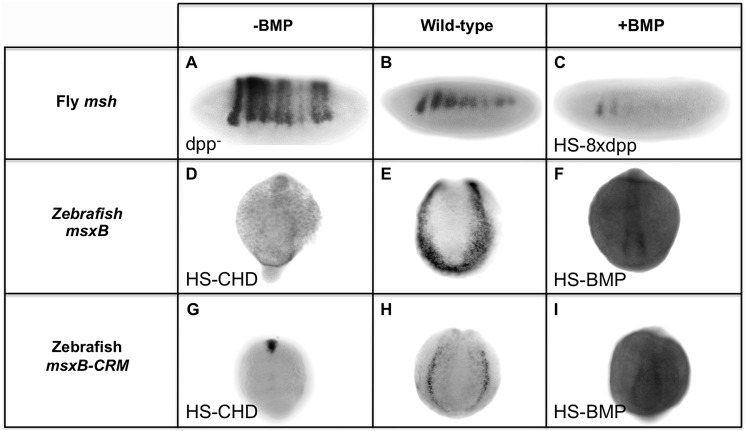Figure 5. Manipulating BMP signaling elicits opposite responses from msh and msxB in Drosophila and zebrafish embryos.
Comparison of equivalent BMP manipulations in Drosophila (Dmel) and zebrafish (Drer) embryos and their effects on msh, msxB and msxB-CRM driving GFP assayed by in situ hybridization. All embryos are oriented with dorsal at the top. Drosophila embryos are oriented with anterior to the left, while zebrafish embryos are view from a posterior perspective. Loss of BMP signaling is Drosophila was examined in dpp null mutant (dpp −) embryos (A) and ectopic BMP signaling was generated by heat induction of transgenic embryos carrying eight copies of a heat-shock dpp construct (HS-8xdpp) (C). In zebrafish, BMP signaling was reduced by heat induction of transgenic embryos carrying a Heat Shock Chordin construct (HS-CHD) (D, G), while BMP over-expression was accomplished by induction of transgenic embryos carrying a Heat Shock BMP2 construct (HS-BMP) (F,I). In dpp − embryos, msh expression expands dorsally as shown also in Fig. 1B. In, contrast, in HS-CHD embryos, expression is weakened relative to the wild-type pattern for both the endogenous msxB gene (E) and msxB-CRM-gfp reporter construct (H). Drosophila HS-8xdpp embryos show reduced msh expression compared to wild type embryos (B) consistent with Dpp having a repressive action on msh expression, while zebrafish HS-BMP embryos exhibit ectopic expression of both the endogenous msxB gene and the GFP reporter gene driven by the msxB-CRM when compared to wild-type.

